Economic uncertainty, growing internal pressure, and lengthening sales cycles are fuelling a new wave of pragmatism among B2B marketing leaders, according to a major global study by Pipeline360.
The 2025 State of B2B Pipeline Growth report, based on responses from over 500 B2B marketers across the US, UK, Europe and Asia, highlights the widening gap between high and low-performing teams – and how the most successful are adapting their strategy to stay ahead.
Economic headwinds and ROI pressure
Nearly half of all respondents (45%) identified economic uncertainty as their top challenge in 2025, followed by unrealistic internal expectations (36%) and declining engagement (33%). Budget and staffing pressures are common, with 31% of marketing teams reporting flat budgets and another third facing cuts. Yet 40% are adding staff, suggesting a renewed focus on efficiency and impact.
High-performing teams are significantly more likely to see increased investment: 65% of these marketers report budget growth compared to just 12% of low performers. The top KPI for elite teams? Revenue generated – not vanity metrics like impressions or clicks.
The six traits of high-performing teams
The report identifies six key areas where the best B2B marketing teams outperform their peers by wide margins:
-
Effective data handling (65-point gap)
-
Streamlined tech stacks (60-point gap)
-
Consistent buyer engagement (60-point gap)
-
Strong lead nurturing (59-point gap)
-
High-quality content (58-point gap)
-
Sales-marketing alignment (51-point gap)
Each of these capabilities reinforces the others, creating what Pipeline360 calls a “virtuous cycle” of sustained performance.
Sales cycles lengthen, buyer journeys fragment
Marketers across all regions are grappling with increasingly complex and elongated buying journeys. More than 70% say their sales cycles have grown, often due to larger buying committees (up to 20 people) and increased scrutiny from finance teams.
The traditional linear funnel no longer reflects reality. Instead, modern buying journeys are non-linear, multi-threaded, and influenced by a wider set of internal stakeholders. Successful marketers are responding by tracking more nuanced metrics such as buying group engagement and account penetration.
Email holds firm as the lead generation channel of choice
Despite the rise of AI and new tools, email remains dominant. Two-thirds (66%) of B2B marketers cite email as their primary lead generation channel, including 72% of high performers. Paid social, paid search, and webinars remain popular, but email’s cost-effectiveness and independence from third-party platforms continues to appeal during economic uncertainty.
Content and AI emerge as twin priorities
Top-performing teams are increasingly focused on content quality and relevance. Over 80% rate their content as very good or excellent, compared to just 25% of low performers. Strategic content planning, personalisation, and innovative formats (like video and case studies) are now key to nurturing prospects.
AI is playing a growing role in scaling content and lead nurturing, with the majority of marketers citing its potential in content creation, email optimisation, and lead scoring. Rather than wholesale transformation, most are applying AI tactically to solve specific pipeline problems.
Tech stacks under scrutiny
The average B2B go-to-market tech stack now includes 23+ tools – yet only 27% of teams plan to invest heavily in martech this year. Instead, marketers increasingly prefer delivered services and actionable insights over new tools. Among high performers, 81% prioritise outcomes over additional software, reflecting growing fatigue with complexity.
Sales-marketing alignment remains a performance driver
Three-quarters of top-performing teams report strong alignment with sales, compared to just a quarter of their lower-performing peers. The most common funnel drop-off points – closing deals, retaining customers, qualifying and nurturing leads – are all shared responsibilities. Misalignment here leads directly to missed revenue opportunities.
Read the full report: Pipeline360 – State of B2B Pipeline Growth 2025


 Whether you want to learn how to use LinkedIn, X or Facebook for marketing, or need to brush up on business skills like leadership, presentation skills or managing meetings, you will find something to enhance your professional skills with these on-demand courses.
Whether you want to learn how to use LinkedIn, X or Facebook for marketing, or need to brush up on business skills like leadership, presentation skills or managing meetings, you will find something to enhance your professional skills with these on-demand courses.